

Re-Basketing a Vanda
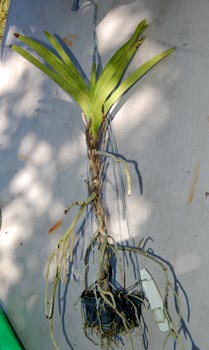 Vanda as the age grow longer and start to lose bottom leaves. At some point the plant begins to lose its attraction. The most common approach is to cut off the top of the plant with good healthy roots and discard the old dead roots.
Vanda as the age grow longer and start to lose bottom leaves. At some point the plant begins to lose its attraction. The most common approach is to cut off the top of the plant with good healthy roots and discard the old dead roots. 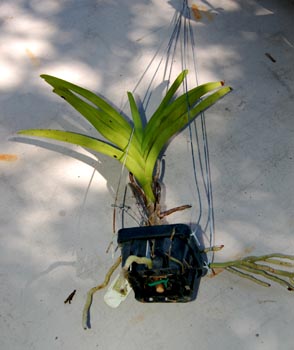
Vanda are the easiest orchids to divide. Once roots start to appear on the stem, the plant can be cut easily with little risk of failure.
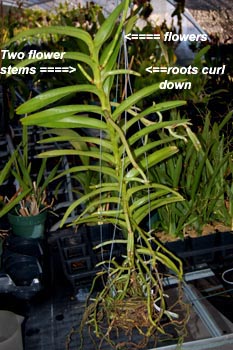 This Aranda Noorah Alsagoff is a prime candidate for division. New healthy roots are starting all along the plant stem.
This Aranda Noorah Alsagoff is a prime candidate for division. New healthy roots are starting all along the plant stem.
The crown of this plant (top) has been broken. This is not a big disaster. The broken piece can be rooted and the rest of the plant can be divided into several pieces.
Whenever Vanda crowns rot or are broken the plant will usually send out new keiki (baby plants) on either or both sides of the top or at the base (basil keiki). Sometimes they will do both.
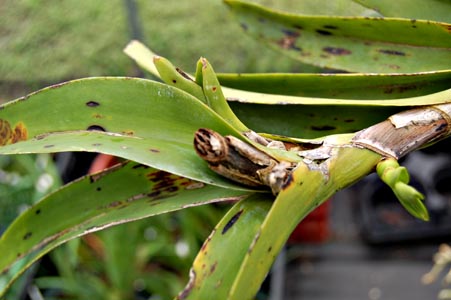 These photo are the top of a different Vanda, that was cut
These photo are the top of a different Vanda, that was cut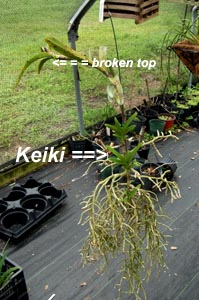 off to prevent fungal infections from traveling down the stem. It then started two new growths at the top and three on the sides of the plant. Given some time this will become an exceptional specimen plant. The black streaks on the leaves are Thai fungus and while they are ugly they do not pose a serious threat to the life of the plant. The new growth is free of the disease and over time the ugly old leaves will be removed.
off to prevent fungal infections from traveling down the stem. It then started two new growths at the top and three on the sides of the plant. Given some time this will become an exceptional specimen plant. The black streaks on the leaves are Thai fungus and while they are ugly they do not pose a serious threat to the life of the plant. The new growth is free of the disease and over time the ugly old leaves will be removed.
Not all broken tops will root but Aranda and Mokara do root easily. This piece from a Mokara plant (Nauchi Eric) was placed into an empty plastic pot without any bark or other medium. 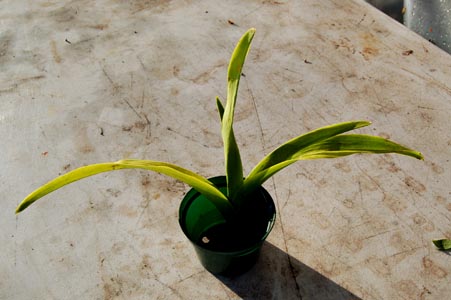 It was placed on a shelf in the Vanda house where it received daily watering. After several months the piece started to root. I do not recommend cutting Vanda pieces without any roots but if you are going to throw it away, then give it a chance.
It was placed on a shelf in the Vanda house where it received daily watering. After several months the piece started to root. I do not recommend cutting Vanda pieces without any roots but if you are going to throw it away, then give it a chance.
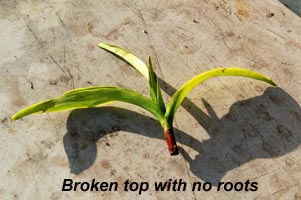
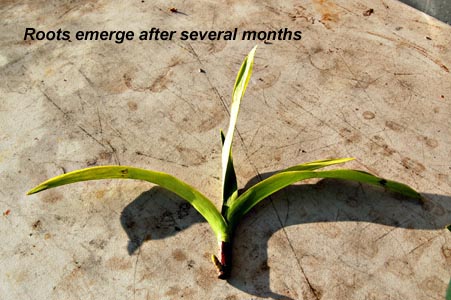
Back to our Aranda.
I decided to cut this plant into 4 pieces. 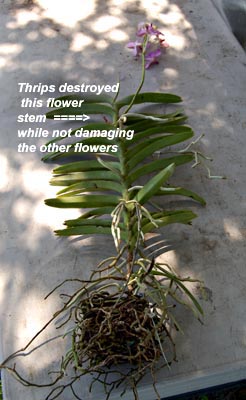 The flowering section at the top will be placed into a new basket as well as once of the middle pieces. One is on a wire hanger rather than a basket and the original pot (Vanda are often raised in pots until close to blooming size) will be put back on the shelf.
The flowering section at the top will be placed into a new basket as well as once of the middle pieces. One is on a wire hanger rather than a basket and the original pot (Vanda are often raised in pots until close to blooming size) will be put back on the shelf. 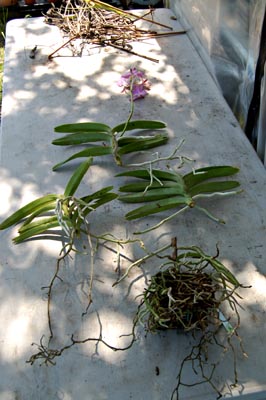
One plant produced four divisions.
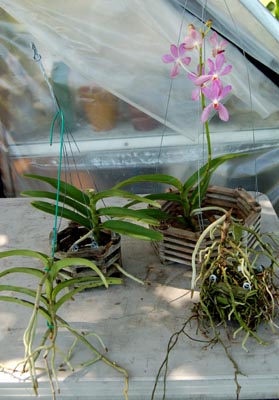 We often use wire hangers (lower left cutting in photo) to mount Vanda rather than baskets. The plants do well either way and the wire hanger is cheap, thereby saving the cost of a basket. Wire hangers are much easier to use on an old Vanda with a large root ball rather than trying to force it into a basket.
We often use wire hangers (lower left cutting in photo) to mount Vanda rather than baskets. The plants do well either way and the wire hanger is cheap, thereby saving the cost of a basket. Wire hangers are much easier to use on an old Vanda with a large root ball rather than trying to force it into a basket.
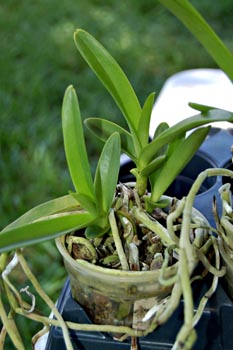 We receive our Mokara in pots at about 6 inches in height. We do not sell all of them and as they get larger we cut the original root ball off the plant. This gives us a nice sellable plant and the original rooted pot will then put up multiple keiki.
We receive our Mokara in pots at about 6 inches in height. We do not sell all of them and as they get larger we cut the original root ball off the plant. This gives us a nice sellable plant and the original rooted pot will then put up multiple keiki. 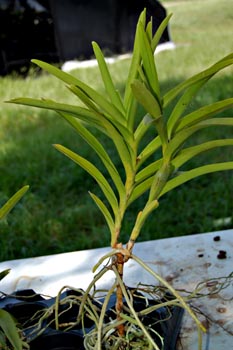
I like to have several good roots on my divisions and the original root ball does better if at least one leaf is left attached.